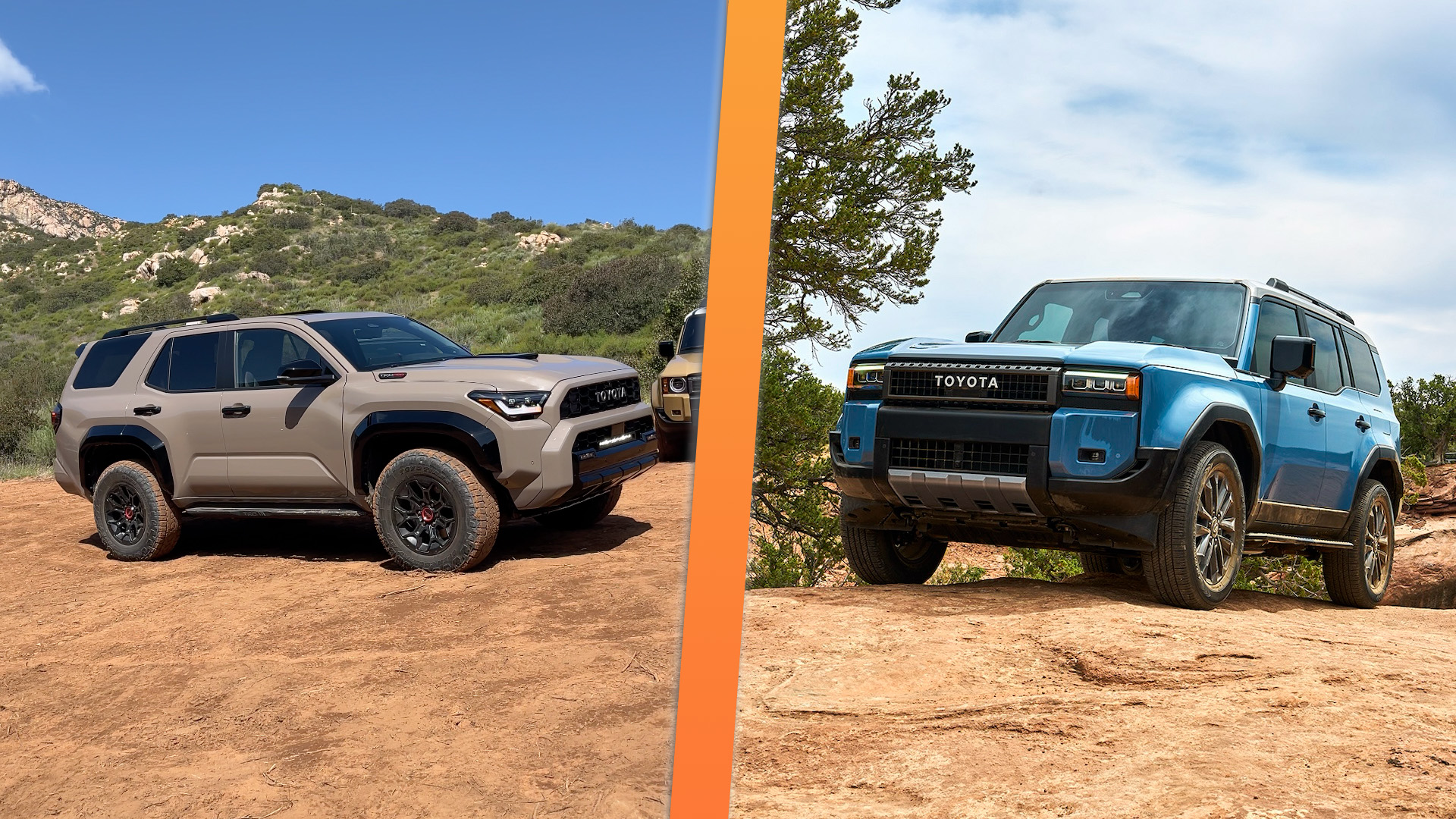

The 2025 Toyota 4Runner has finally arrived, bringing all of Toyota’s SUV lineup into the modern era. It joins the remarkably similar 2024 Toyota Land Cruiser, which is close in size, uses some of the same drivetrain parts, and even sits on the same platform. It makes you wonder how different they really are, and if they even need to coexist. We’ve compared them side-by-side, and found that it’s obvious where the 4Runner stands in relation to the Land Cruiser—and where comes ahead.
Let’s start with the basics, which are near identical. Both are based on Toyota‘s new TNGA-F truck platform, and feature equal 112.2-inch wheelbases. They share the Tacoma’s 2.4-liter turbo four-cylinder engine, with a hybrid system that’s standard on the Land Cruiser and optional for 4Runners. (Both hybrids make 326 horsepower and 465 lb-ft of torque.) Aft of it is an eight-speed automatic transmission, which can either go straight to the rear axle in the 4Runner only or to all four wheels in either model, via a locking center differential. They also share a towing capacity of 6,000 pounds.

Things differ more between their bodies, with the 4Runner being 1.1 inches longer, but the Land Cruiser getting a 5.3 inch-taller roofline. The 4Runner has an optional third row and a power window in its liftgate, both of which the Land Cruiser lacks—it’s a five-seater only.
The suspension diverges further, though it may not seem so on first glance. Both use double-wishbone front suspension and multilink coils in the rear, with electronic sway bar disconnects. But the 4Runner boasts up to 9.2 inches of ground clearance, while the Land Cruiser gets only 8.0. The 4Runner Trailhunter also bests the Land Cruiser’s ramp angles, with 32-degree approach and 24-degree departure angles to the Land Cruiser’s 31 and 17. And while the Land Cruiser is offered with just a single suspension spec, the 4Runner runs the gamut of road-oriented Platinum models to the rugged TRD Pro and Trailhunter, the latter of which features name-brand off-road performance parts like Old Man Emu shocks.


How these two similar SUVs can coexist without cannibalizing each other’s sales isn’t obvious, but Toyota’s confident they won’t. Kalifa Sprowl, Senior Marketing Planner for Land Cruiser, told us the midsize SUV segment is still growing, and that the 4Runner and Land Cruiser appeal to distinct customer bases.
Clearly, they cover all the bases, with their selection of gas and hybrid engines, rear- and four-wheel drive, and choice between classic SUV inspirations. If anything, it seems like Toyota has ended up in a similar position to when it sold the FJ Cruiser: A 4Runner-derived SUV differentiated by throwback styling. Even if they’re similar underneath, Toyota proved it could make both work—and give the public two SUVs that’d become classics. And when you start spending big on their suspensions, the differences disappear anyway.
So, will that be 4Runner or Land Cruiser for you?
Got a tip or question for the author? You can reach them here: james@thedrive.com